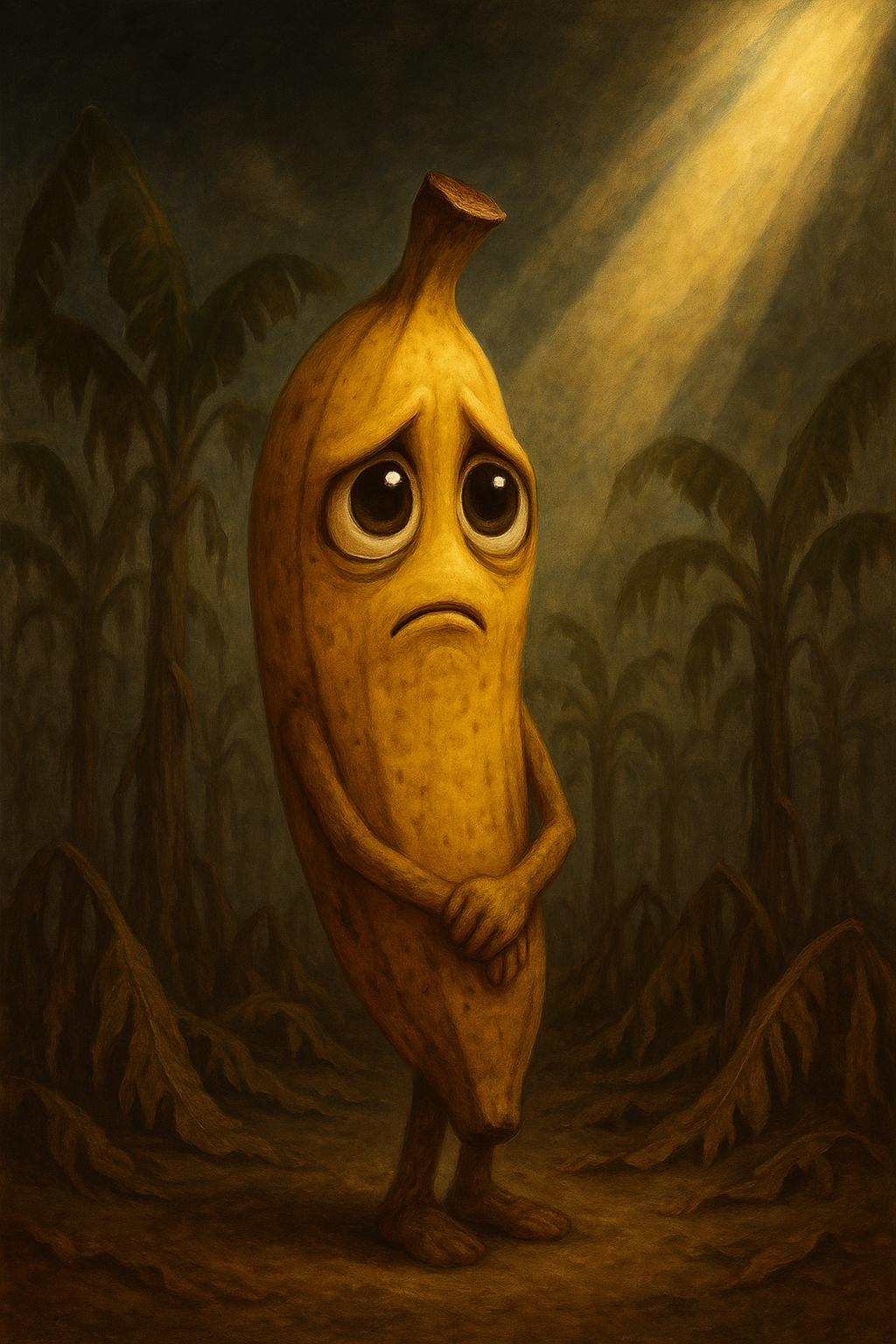
Help Our Endangered Precious Fruit Live On Through the Ages.
Before the Cavendish banana dominated store shelves, there was another, superior variety: the Gros Michel, or "Big Mike." It was larger, had a thicker peel that made it resistant to bruising, and possessed a sweeter, creamier, and more intense banana flavor. It was, by all accounts, the perfect banana.
For the first half of the 20th century, the Gros Michel was the only banana exported and sold in global markets. It was a monoculture—a single variety planted over vast areas. This efficiency, however, became its fatal flaw. In the 1950s, a devastating fungal disease known as Panama disease, or "Fusarium wilt," began to spread through the plantations of Central and South America.
The fungus was relentless. It attacked the roots of the banana plants, choking them of water and nutrients, and because every Gros Michel plant was a genetically identical clone, if one was susceptible, they all were. Entire plantations were wiped out, and the multi-billion dollar banana industry was brought to its knees. By the 1960s, the Gros Michel was commercially extinct.
The Rise of a New King
In a desperate search for a replacement, the industry turned to the Cavendish banana. While considered blander and more fragile, it had one crucial advantage: it was resistant to the strain of Panama disease that had killed the Gros Michel. The Cavendish quickly became the new global standard, and for generations, it has been the only banana most people have ever known.
History Repeats Itself
Now, the Cavendish itself is in peril. A new, more aggressive strain of the fungus, Tropical Race 4 (TR4), has emerged. It is immune to the fungicides that controlled its predecessor and is slowly spreading across the globe, wiping out Cavendish plantations. We are facing the same crisis all over again, with our new monoculture on the brink of collapse.
The story of the banana is a cautionary tale about the dangers of agricultural monocultures and the loss of biodiversity. By supporting diverse, small-scale farms and preserving heirloom varieties, we can help ensure that the fruits we love don't just become stories in a history book.